The Leading Edge: February 2023 Wind Energy Newsletter
In this edition, we discuss wind energy in Puerto Rico, certification support, an offshore patent, a tribute to a researcher, and more.
News Stories
NREL Study Shows Wind Energy Can Help Puerto Rico Achieve Its Clean Energy and Grid Reliability Goals
The Puerto Rico Energy Public Policy Act, passed in 2019, set a goal for the territory to transition away from imported fossil fuels and instead meet its electricity needs with 100% renewable energy by 2050, 60% by 2040, and 40% by 2025. To support that goal, experts from the National Renewable Energy Laboratory (NREL) evaluated Puerto Rico's wind energy costs and technical potential (leer en español). Their findings show that wind energy represents a viable, low-cost option for helping Puerto Rico achieve its clean energy and grid reliability goals.
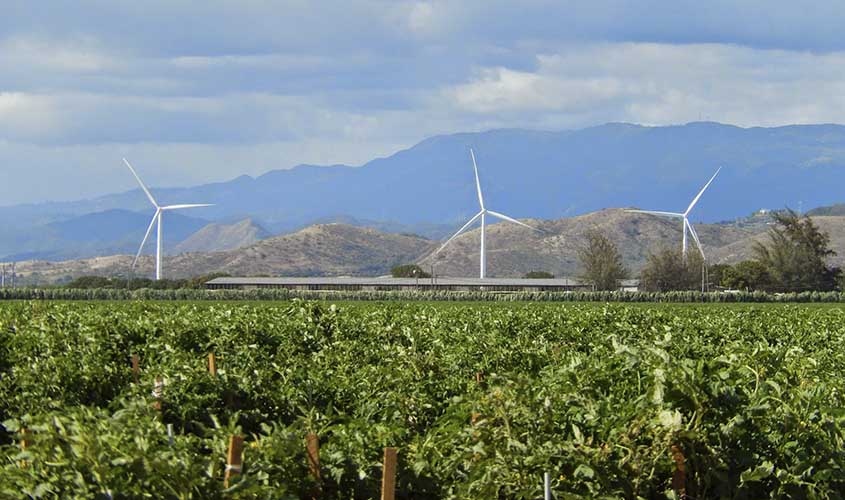
Behind the Blades
Remembering Robi Robichaud: Former NREL Wind Energy Colleague Saw the Potential in Everyone
A person's office can say a lot about them. A tidy, uncluttered office implies the inhabitant is well-organized—perhaps meticulous. But instead of saying, "messy," wind energy researcher Robi Robichaud's chock-full office at NREL spoke of potential.

Ian Baring-Gould, NREL's distributed wind energy lead, describes Robichaud as "a pack rat, but a pretty organized one who could always find what he wanted." Robichaud worked at NREL for more than two decades. He passed away earlier this year.
Tony Jimenez, who worked with Robichaud on wind energy projects before moving to Accelerated Deployment and Decision Support, remembers Robichaud's office too. "I have two memories of Robichaud that stand out. My favorite is of a work trip Robi and I took to Shenandoah National Park in August 2017 to look for possible distributed wind turbine sites within the park. Robi was great company," Jimenez said. "My other memory is of Robi's office, which was very cluttered—full of reports and books and various pieces of equipment."
In his younger days, Robichaud was an avid cyclist who biked across the United States from coast to coast—not once but three times. He played semiprofessional basketball in Europe. He also taught high school math at schools in England, Luxembourg, India, and the eastern and western United States, and even tutored in his free time later in life.
Robichaud joined NREL's education department in 1999 and later moved into wind energy, working on Federal Emergency Management Program projects, Wind Powering America (now known as WINDExchange), Wind for Schools, and federal Renewable Resource Centers. Robi traveled throughout the United States and internationally, visiting possible wind energy sites and conducting wind energy resource assessments. He hosted wind-energy-focused training sessions for federal energy managers. He also served on the NREL organizing team of four U.S. Department of Energy (DOE) Solar Decathlon competitions.
"Robi was a very down-to-earth guy who could communicate with anybody, especially people who were different from himself," Baring-Gould said. "He always wore jeans and a rumpled shirt, but that laid-back style didn't stop him from communicating effectively with everyone from military folks and base commanders to students and tour groups."
Baring-Gould remembers Robichaud as the perfect team player who was always willing to help on any kind of project. "He loved being part of a team of people and never missed the opportunity to join colleagues around the table for birthdays and other celebrations," Baring-Gould said. "But his hallmark was finding solutions. He listened to what people said, thought about possible solutions, and talked them through it."
Jochem Weber, NREL's chief water power engineer, has a different perspective of Robichaud's office. "Robi didn't cling to things. Instead, he kept what might seem like useless stuff out of a hopefulness that there would be a use for it in the future," Weber said. "Robi trusted there would be some kind of beautiful use for old things, so he kept them until the occasion came up. He trusted in the value of things and life and people."
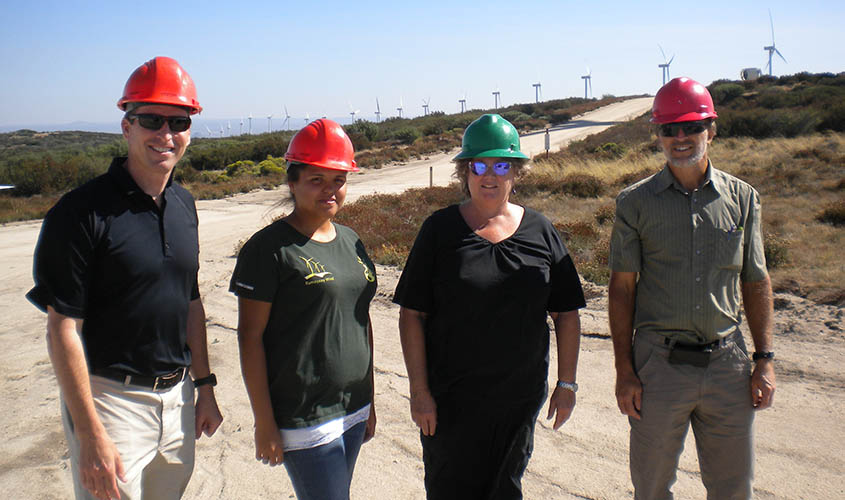
Weber describes Robichaud as kind, generous, determined, and dedicated to serving people and the renewable energy cause. "Robi was not somebody who would quickly change course because things got hard," he said. "He was very resilient and persistent, with strong, sound values and principles. Challenges always led to good stuff for Robi. He was young in mind and heart and had the versatility, appetite, and courage to try new things."
Robichaud also told stories that, like fairy tales, included a moral at the end. "Whenever he got to the end of a long story, there was always a good lesson," said Suzanne Tegen, who shared an office wall with Robichaud for 8 years and worked with him on wind energy education for students and decision makers. "Robi was very principled and did everything for a reason. I will miss him!"
Robichaud had a reason behind the seeming chaos of his office, which told the story of a man who saw potential in everything and everyone. A man whose colleagues loved him. And a man who will be missed by those who knew him.
On the Radar
Researchers Make Progress in Phase 2 of the Big Adaptive Rotor Project
A collaborative effort between NREL and Sandia National Laboratories, the Big Adaptive Rotor (BAR) project aims to develop technologies for the next generation of land-based wind turbines. Launched in 2018, BAR is now in its second phase, which focuses on maturing technology readiness for large wind turbine designs. BAR researchers have made recent progress, including:
- Performing simulations to confirm the potential of downwind wind farms in the latest release of AMR-Wind, a tool developed by the NREL-led ExaWind project
- Working with industry partner Envision Group to offer better load and power predictions, especially for large flexible rotors, by improving the aerodynamic module AeroDyn15 in NREL's OpenFAST tool
- Completing a risk analysis in preparation for an experiment, in which a General Electric 1.5-megawatt wind turbine at NREL's Flatirons Campus will operate in a downwind configuration to generate a valuable data set.
BAR seeks strong collaborative engagement with industry stakeholders and holds quarterly meetings with an external advisory board formed of industry experts to collect feedback and share results. Most of the findings and numerical models developed under BAR will be transferable to offshore wind energy applications and support President Biden's 2035 offshore wind energy deployment goal.

Report To Summarize Workshop on Reducing U.S. Offshore Wind Energy Noise
On Dec. 13–14, 2022, researchers from NREL and the Pacific Northwest National Laboratory hosted the U.S. Offshore Wind Energy Noise Reduction Workshop on behalf of DOE's Wind Energy Technologies Office (WETO) in collaboration with the U.S. Department of the Interior's Bureau of Ocean Energy Management and the National Oceanic and Atmospheric Administration.
The 2-day virtual workshop covered foundation types and installation methods followed by noise abatement strategies and monitoring, bringing together 125 industry representatives, subject-matter experts, and regulators to discuss, through written and oral commentary, the barriers to reducing noise during offshore wind farm construction activities. Topics included alternative foundations and installation methods, existing noise abatement technologies, and future research and monitoring needs.
A final report will document these discussions as well as analyses of 13 offshore wind energy construction and operation plans and a compilation of 596 responses to an industry participant questionnaire about future research that was sent out prior to the workshop.
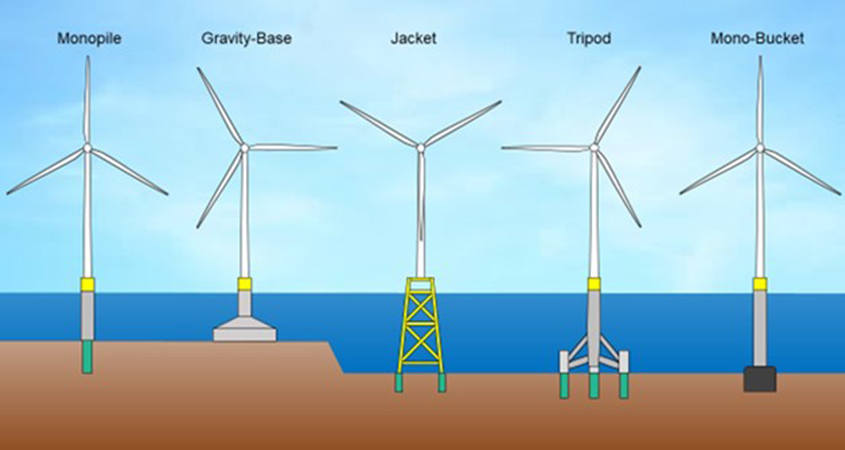
NREL Funding Helps Distributed Wind Turbines Get Certified
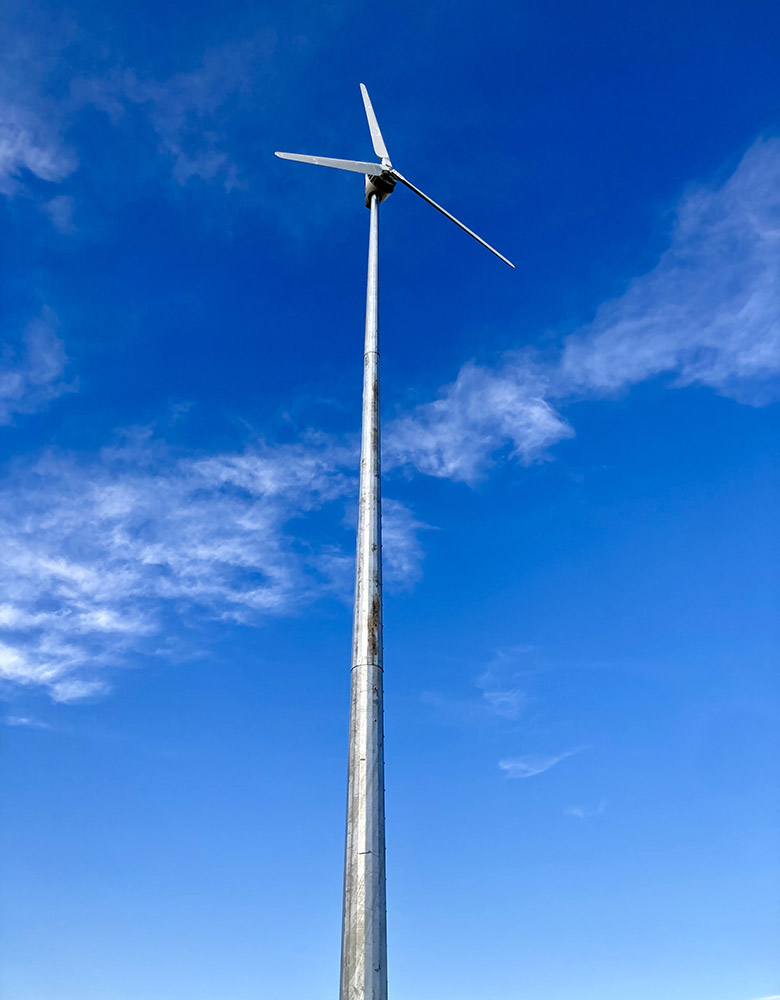
Certification is an important step before wide commercial deployment of small- and medium-scale wind turbines that produce distributed wind energy, which is used in homes, schools, farms, and remote communities at or near where it is generated. And yet, the certification process can be complicated and costly for smaller companies. By funding the International Code Council's Small Wind Certification Council to cover the cost of preliminary reviews for certification applicants, NREL just made the process easier. Manufacturers with technology they want to develop and certify are encouraged to learn more.
Downwind: In Case You Missed It
NREL Researchers Publish End-of-Service Wind Energy Project Guide
A new informational resource for communities to better understand repowering or decommissioning processes for wind turbines and related infrastructure has been added to WETO's WINDExchange website. The online and downloadable Wind Energy End-of-Service Guide, produced by researchers at NREL, provides readers with information about what happens to the more than 70,000 land-based wind turbines currently installed across the United States—with more being deployed to reach state and federal renewable energy goals. That can include partly or fully repowering them to extend their life or decommissioning them (which removes a wind energy project and involves land restoration).
Design for a Floating Offshore Wind Turbine Platform Receives a Patent
To protect floating wind turbines from being battered by ocean waves, NREL's Senu Sirnivas brainstormed with colleagues Rick Damiani and Fabian Wendt and were awarded a patent in October 2022 for their flexible aquatic substructures. The device, known as the Ultraflexible Smart Floating Offshore Wind Turbine, can be manufactured, assembled on site, and precommissioned, then towed to where it needs to be installed. Sirnivas displayed a model of the device in Colorado last summer at the Energy Innovation Summit hosted by DOE's Advanced Research Projects Agency – Energy, where it caught the attention of Secretary of Energy Jennifer Granholm. "She was thrilled with the prospect of an innovative offshore floating wind technology being developed at NREL to help combat climate change," he said.
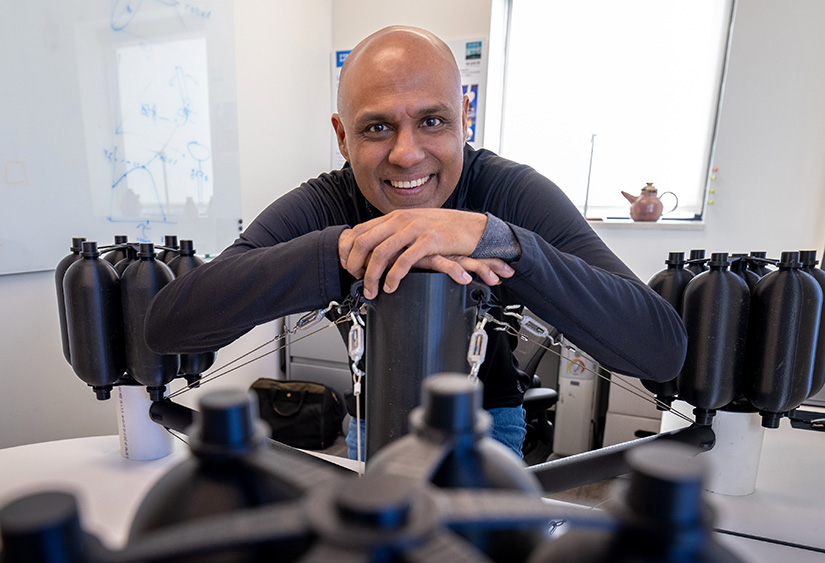
NREL Researcher Inspires Younger Hispanic Generations To Pursue Careers in Science, Technology, Engineering, and Manufacturing
With over a decade of achievements in geospatial data science, Anthony Lopez, a senior researcher at NREL, was named the Most Promising Scientist by Great Minds in STEM, a prestigious award that honors the highest-achieving scientists and engineers from the Hispanic community across the United States.
Read more about Lopez in his Behind the Blades feature from October 2021.
NREL Wind Energy Researchers Highlighted in Innovators Book
NREL recently published Clean Energy Innovators: NREL People Working to Change the World, a 202-page publicly accessible book written by NREL's Ernie Tucker, in which "innovators" trace the tale of NREL's people and the technologies along with color photos. These innovators and contributors to the book's publication include wind energy team members at the lab from past and present (in order of appearance): Carol Laurie, Terri Marshburn, Walt Musial, Brian Smith, Sandy Butterfield, Bob Thresher, Sue Hock, Bob Noun, Paul Veers, Katherine Dykes, Ismael Mendoza, Amy Robertson, Jennifer King, Johney Green, Maureen Hand, Pat Moriarty, Riccardo Bracho, Paul Fleming, Ben Kroposki, Daniel Laird, and others.
Bob Thresher, who is an emeritus wind researcher featured prominently in the "Wild West of Wind" chapter, said, "Were it not for the persistence, risk-taking, and imagination of the small teams of renewable energy pioneers profiled in this book, we would not have the low-cost, carbon-free energy technologies ready today to mitigate climate change." Thresher added that these stories need to be passed on to inspire the next generation in their efforts.
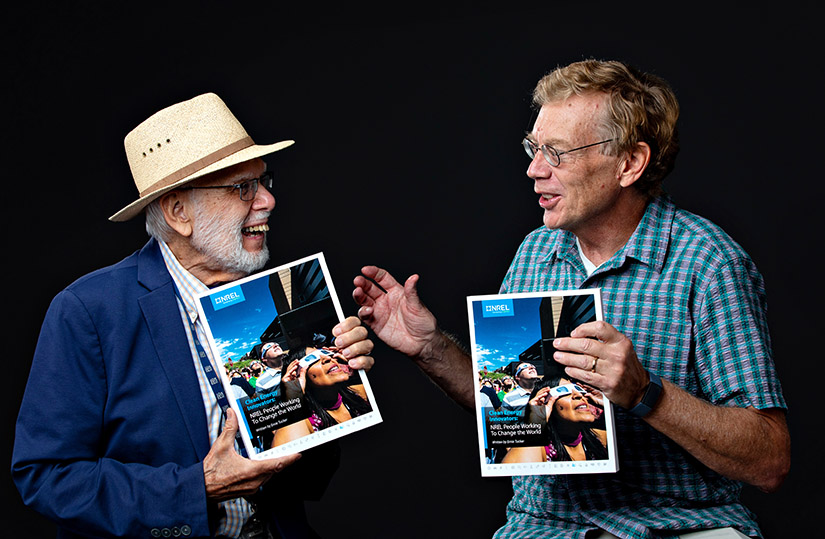
U.S. Department of Energy Announces Collegiate Wind Competition Phase 2 Teams
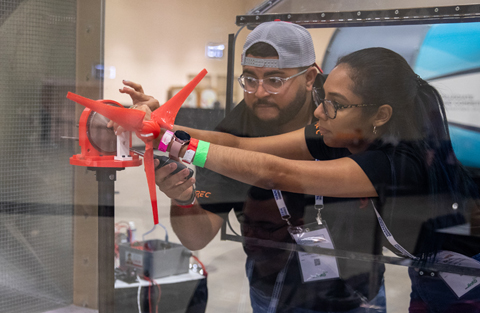
Thirteen schools have been selected to participate in Phase 2 of the DOE’s 2023 Collegiate Wind Competition, which culminates in seeing how their model wind turbine performs, like the one shown here being tested in a wind tunnel. Photo by Werner Slocum, NREL
Congratulations to the 13 teams selected to participate in Phase 2 of DOE's 2023 Collegiate Wind Competition! Since 2014, DOE has held the competition to provide college students an opportunity to build the skills and connections that will help them find jobs in the wind and renewable energy industries. Managed by NREL on behalf of WETO, the competition helps college students prepare for jobs in these industries through real-world wind energy technology, project development, and outreach experience.
NREL in the News
NREL Scientists Find More Eureka Moments, Patent Activity Climbs In FY '22, Clean Technica, Feb. 17, 2023
New Power System Cybersecurity Architectures Can Be 'Vaults' Against Insider Attacks, Analysts Say, Herman K. Trabish, Utility Dive, Feb. 17, 2023
U.S. to Pour USD 30 Million Into Lowering Costs of Large Wind Turbines, Adnan Memija, offshoreWIND.biz, Feb. 13, 2023
We Can Now Recycle the "Non-Recyclable" Blades of Decommissioned Wind Turbines, Oraan Marc, autoevolution, Feb. 11, 2023
U.S. Faces "Many Gaps" in Manufacturing Offshore Wind Farms, Stas Margaronis, American Journal of Transportation, Feb. 7, 2023
Port of Long Beach Plans Offshore Wind Turbine Assembly Terminal, Aileen Cho, Energy News Record California, Jan. 26, 2023
- Similar coverage from Recharge News
U.S.: Westwood Insight—Pacific Wind: California Dreaming, energy-pedia news, Feb. 2, 2023
New-Look Floating Wind Platform for World's Largest Sector Project Seals 'Detailed Design', Darius Snieckus, Recharge, Feb. 1, 2023
Nucor Targets U.S. East Coast Offshore Wind Energy Build-Out, Robert England, Fastmarkets, Jan. 24, 2023
Bill Would Jumpstart Development of Offshore Wind in Gulf of Maine, Natural Resources Council of Maine, Jan. 24, 2023
Natural Power Accelerates EchoSense Deployment to Protect Bats, Ariana Fine, North American Windpower, Jan. 23, 2023
Gov. Edwards: Louisiana Is 'Poised for Success' With Offshore Wind Energy, Alina Hernandez, Tulane University, Jan. 23, 2023
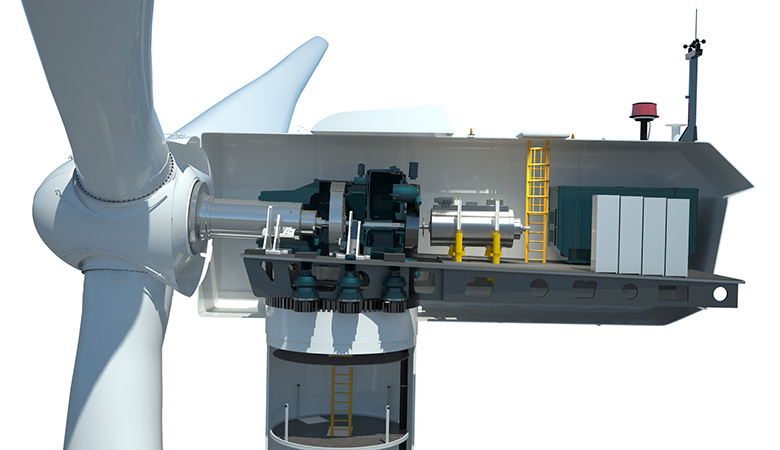
Publications
Energy Potential
IEA Wind TCP Task 26: Wind Technology, Cost, and Performance Trends for Denmark, Germany, Ireland, Japan, Norway, Sweden, the European Union, and the United States 2016-2019, International Energy Agency Wind Technical Report (2023)
Software and Tools
Distributed Wind-Hybrid Microgrids With Autonomous Controls and Forecasting, Applied Energy (2023)
OC6 Phase III Definition Document, NREL Technical Report (2023)
Offshore Wind Energy Forecasting Sensitivity to Sea Surface Temperature Input in the Mid-Atlantic, Wind Energy Science (2023)
Sensitivity Analysis of the Effect of Wind and Wake Characteristics on Wind Turbine Loads in a Small Wind Farm, Wind Energy Science (2023)
Turbulent Entrainment in Finite-Length Wind Farms, Journal of Fluid Mechanics (2023)
Wind Energy End-of-Service Guide, WINDExchange Guide (2023)
Want More?
Subscribe to The Leading Edge newsletter, and explore the latest news and accomplishments in wind energy at NREL.
Share
